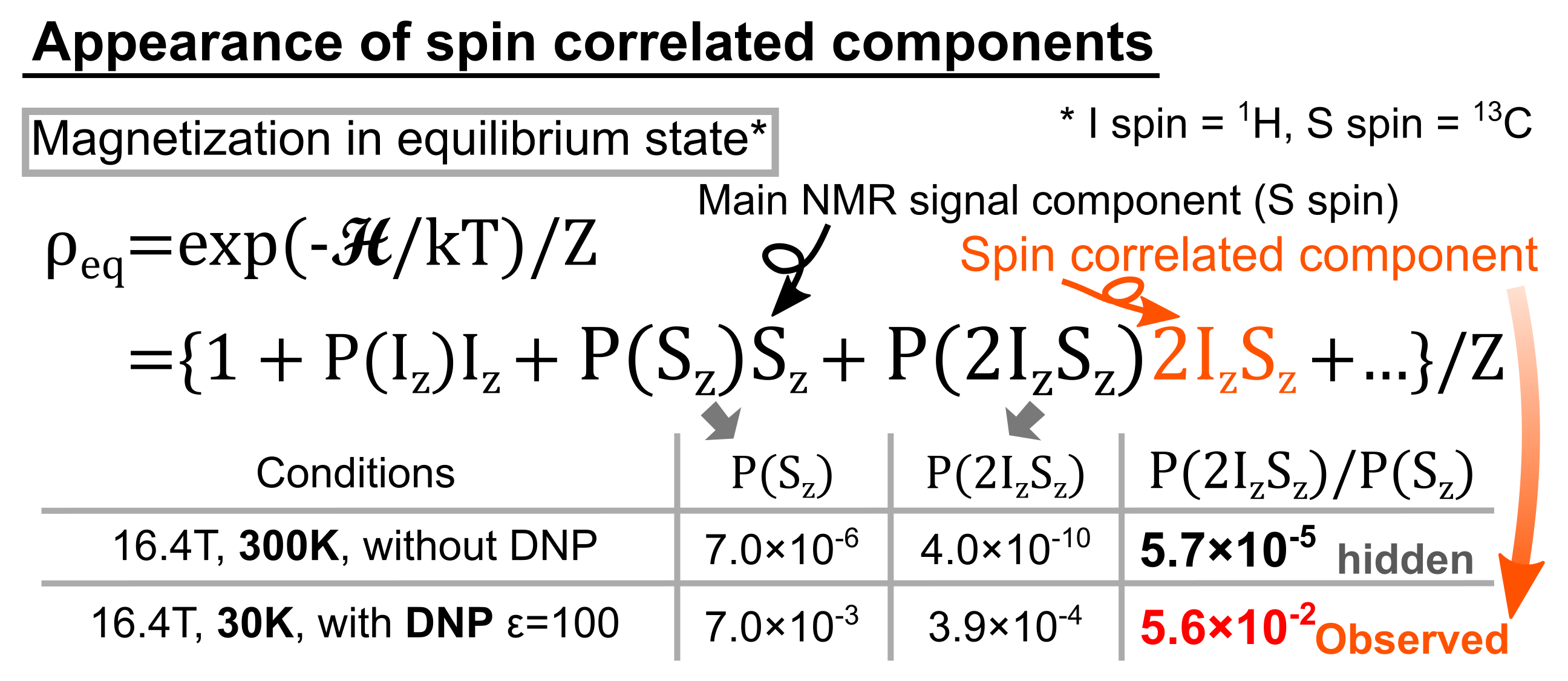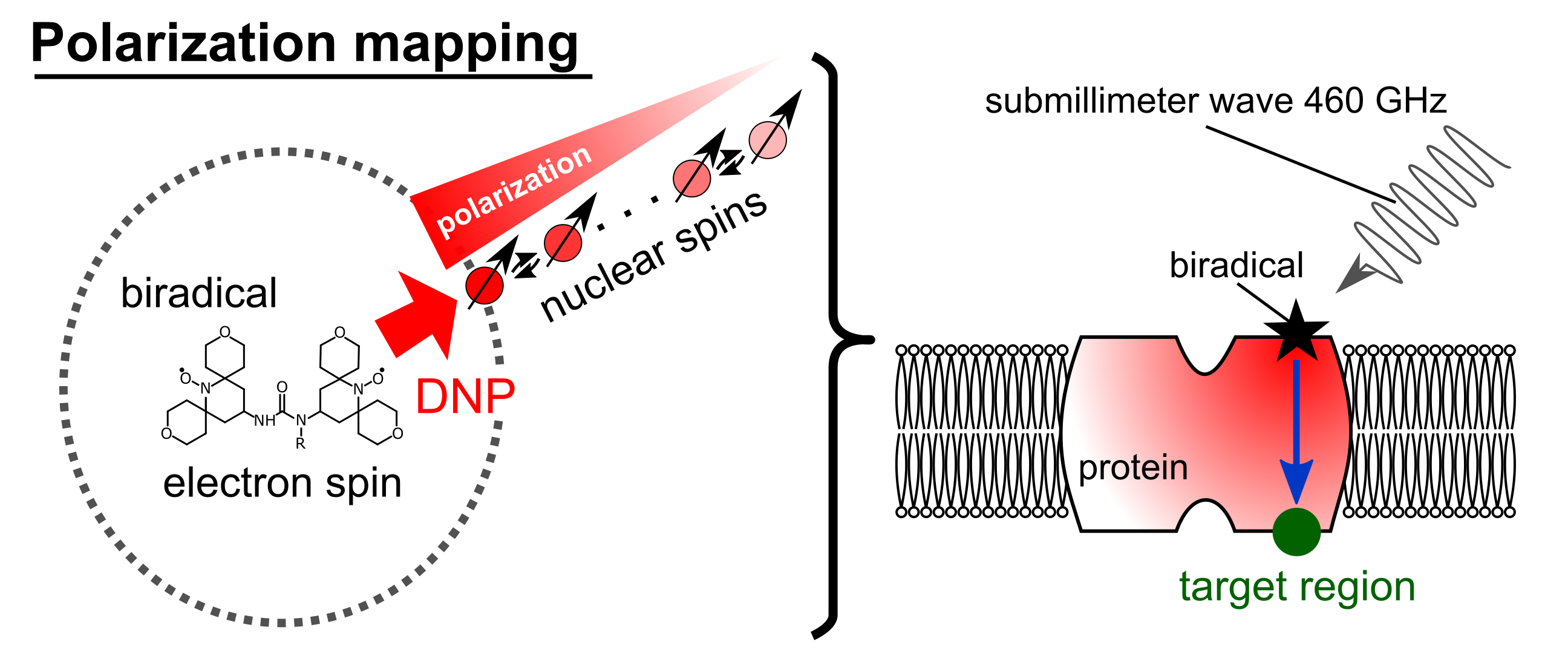Applications of hyperpolarized nuclear spin
Though sensitivity improvement of NMR signals is the biggest advantage of hyperpolarized NMR achieved by dynamic nuclear polarization (DNP) under an ultralow temperature and a high field, that’s not only what hyperpolarization brings us.
The phenomenon, appearance of “spin correlated components”, is one of the benefits of hyperpolarization. We can obtain the information about chemical bonds or distance between spins using spin-spin interactions such as J coupling and dipolar coupling. In other words, spins are completely independent from each other without these kinds of interactions, almost everyone believes. However NMR signals contain the components generated by correlations between two or more spins, which have nothing to do with spin-spin interactions but is related to higher-order components of Zeeman interaction. These components is less than ten thousandth of the main signal components and thus can’t be observed at room temperature without DNP. It’s so small that we usually ignore it with “high-temperature approximation”. In hyperpolarized NMR, on the other hand, spins are strongly put in order in the direction of a static field. As a result, the approximation is violated and the components normally ignored so far is large enough to be observed in NMR spectrum! This is the very “spin correlated components”.

What can we study with this phenomenon? To give an example of the application, this can be used to measure polarization because the larger polarization is, also the larger the spin correlated components are. In DNP experiments, large polarization transfer from electron spins of radicals to nuclear spins in the vicinity of radicals and diffuse among other spins. Therefore polarization depends on the distance between the radicals and the nuclear spins and molecular structure such as density of nuclear spins. Some ingenious ideas provide us site-selective polarization and finally we can surely develop the new method for structure analysis through polarization mapping using the spin correlated components.

There is another example. Some certain NMR spectroscopy methods require spin correlation using spin-spin interactions, which is normally made from complicated, long pulse sequence containing at least 10 pulses. However the pulse sequence becomes significantly simple in hyperpolarized state because of the spin correlated components. Specifically, there are only two pulses for excitation and of course, no pulse for making spin correlation! This method is worth using because too long or too strong pulses cause damage to either probes or samples, or both.
Gifts from hyperpolarization with DNP keep broadening our horizon in various directions. This magnificent view must provide us special experiences breaking the mold, just now and in future.